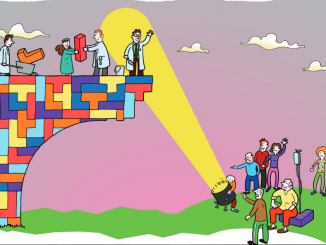 The recent controversy that has shaken the International Cochrane Network to its roots is very troubling. It is not yet clear if the disagreements on the quality of a recent systematic review on the efficacy and safety of the HPV vaccine had any role in the dispute, but for sure this quarrel risks to compromise the hard-won public trust in their conclusions, based on the interpretation of numbers produced with very complex and sophisticated statistical tools.
The recent controversy that has shaken the International Cochrane Network to its roots is very troubling. It is not yet clear if the disagreements on the quality of a recent systematic review on the efficacy and safety of the HPV vaccine had any role in the dispute, but for sure this quarrel risks to compromise the hard-won public trust in their conclusions, based on the interpretation of numbers produced with very complex and sophisticated statistical tools.
The Cochrane “scandal” adds more obstacles to the completion of the huge work that remains to be done to increase statistical literacy.
Numbers – related to efficacy, safety, effectiveness, reliability of a study’s conclusions and so on – are the subject of the cover story by Fabio Turone dedicated to “The trouble with health statistics”, and specifically on the growing body of evidence suggesting that even basic statistical concepts, and the meaning of evidence, are still hard to fully grasp for many health professionals, with reflexes that are particularly evident when it comes to cancer screening: “Communication about cancer screening is dodgy: benefits are overstated and harms downplayed. Several techniques of persuasion are used. These include using the term ‘prevention’ instead of ‘early detection’, thereby wrongly suggesting that screening reduces the odds of getting cancer. Reductions in relative, rather than absolute, risk are reported, which wrongly indicate that benefits are large. And reporting increases in 5 year survival rates wrongly implies that these correlate with falls in mortality” as Gerd Gigerenzer, Director of the Harding center for risk literacy in Berlin, put it in an editorial published in the British Medical Journal.
New developments in drug registration
The more we learn about cancer, the faster we need to question the assumptions that drive the practice. In the last 20 years trastuzumab (for breast cancer) and then imatinib (for chronic myeloid leukemia) promised to change the paradigm of cancer treatment, paving the way to the new era of targeted, precision, personalised oncology. As a result, last year the US Food and Drug Administration approved the use of pembrolizumab, a well-known monoclonal antibody, based not on tumour location, but on its genetic features. The drug can now be used against any solid tumour with two specific genetic markers. It’s an important new development, provided that the cancer’s site can still have a relevant role to play: “It has been well established that the tumour has a strict relationship with the microenvironment where it develops and grows. Even in the presence of the same mutation or genetic marker, responses can be different” Pier Paolo Di Fiore, director of Molecular Carcinogenesis and Stem Cell Biology research unit at Istituto Europeo di Oncologia (IEO) in Milan, Italy, told Roberta Villa in her feature (Ask cancer for its name, not only for its address) in this second issue of CancerWorld+, offering new in-depth content published only online twice a year, to enrich and complement the traditional paper issues of the magazine.
Deprived environments need tailored guidelines
And while Western countries are debating the affordability of new treatments, cancer rates are skyrocketing in sub-Saharian Africa, where unique care circumstances require specially tailored clinical practice guidelines. Mohammed Yahia reports on the ongoing efforts to make available 25 new such guidelines by the end of 2018, in the hope of controlling the disease – like it happened for HIV – starting from well organized and appropriate low-cost intervention (Countering the rise of cancer in sub-Saharian Africa).
Another very promising low-cost (but very complex) intervention is starting to bear fruits in the European Union thanks to the launch, last February, of the European Cancer Information System (ECIS), that integrates data from 150 European population-based cancer registries from 25 EU member states and 7 non-EU European countries, as Marc Beishon illustrates (The fight against cancer benefits from a stronger European union of registries). This new tool now provides a mechanism for cancer registries to submit a common dataset for quantifying the burden of cancers, following trends and changes over time. Numbers that will be fundamental for informing health policies all around Europe.




